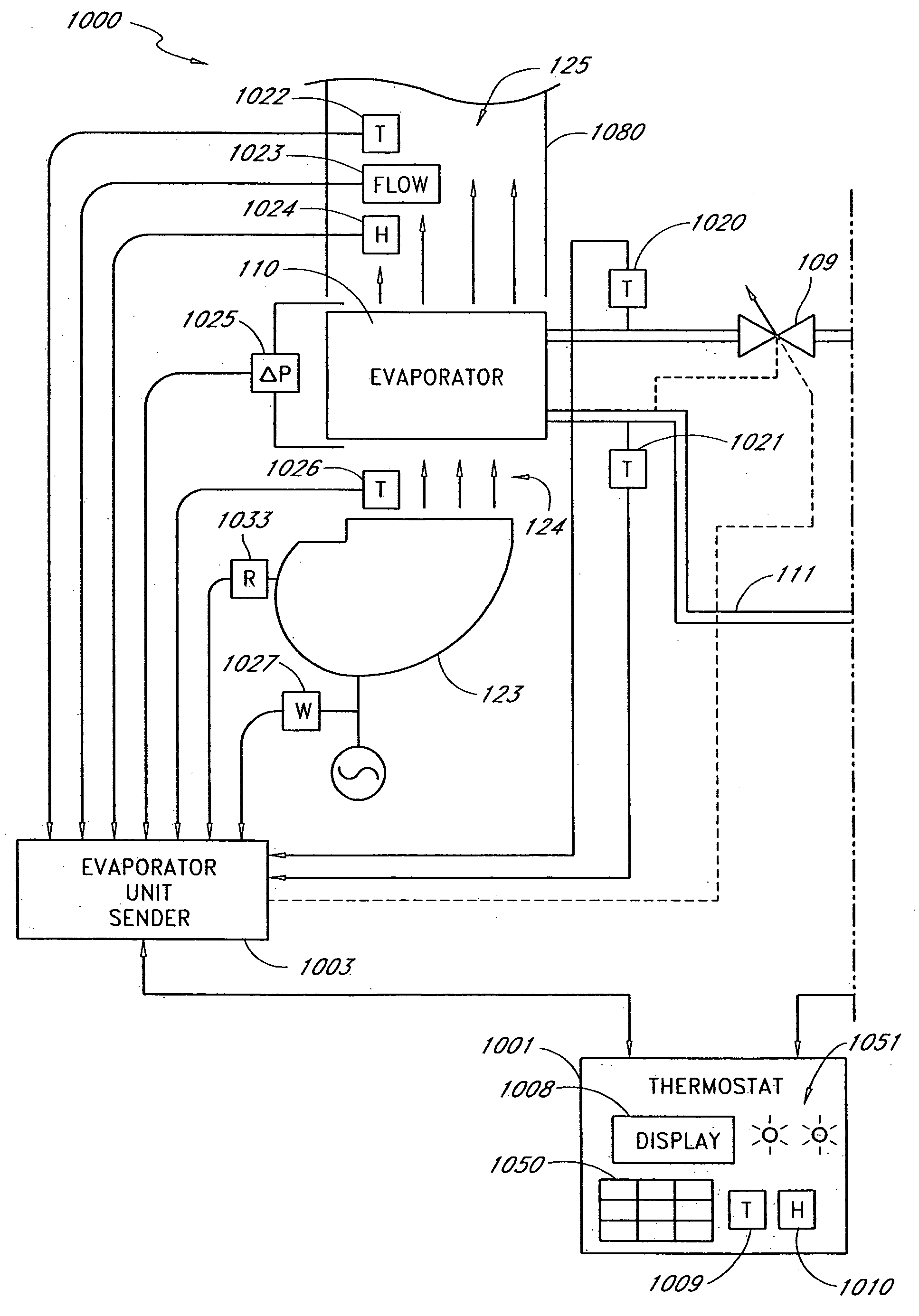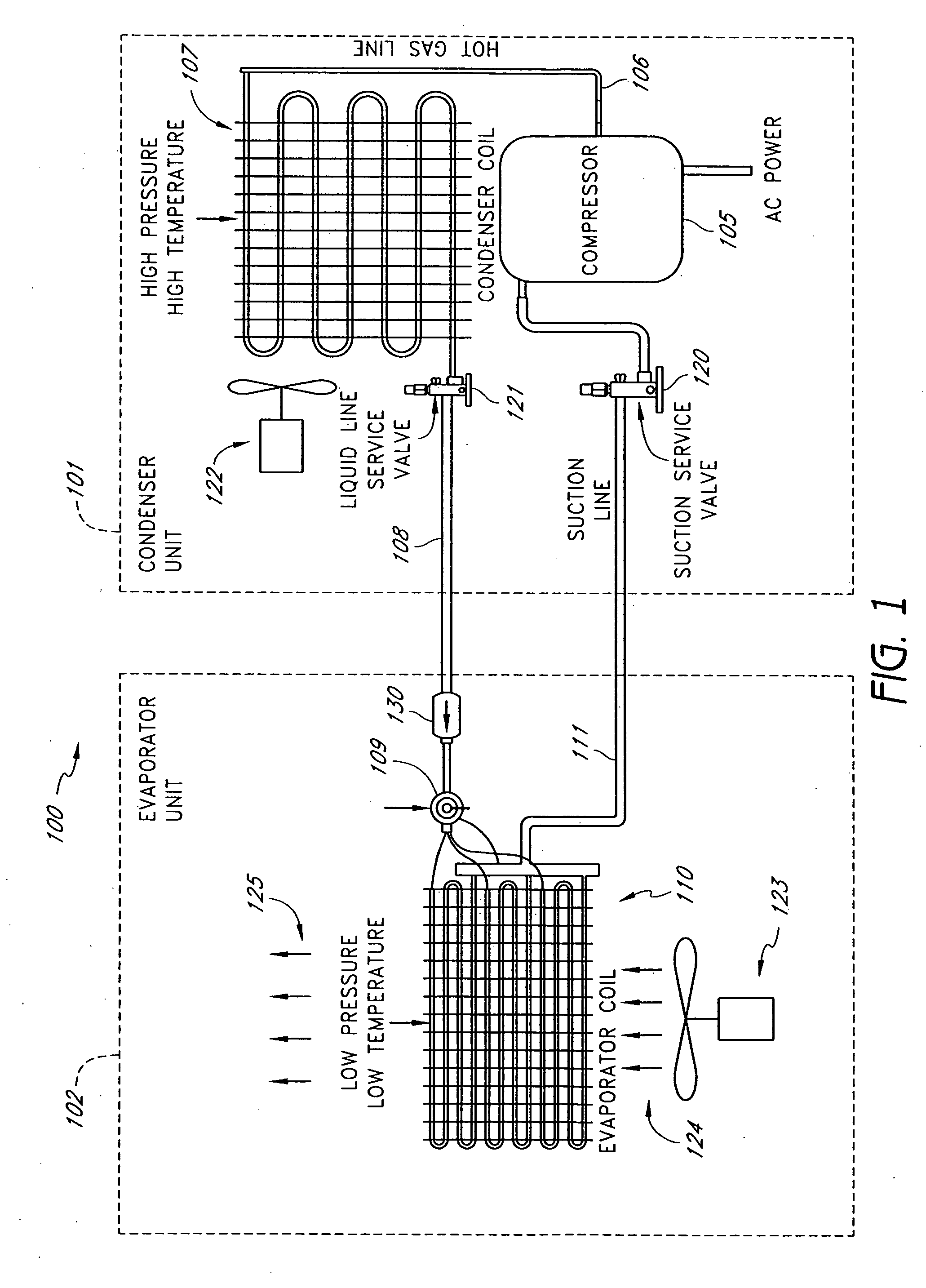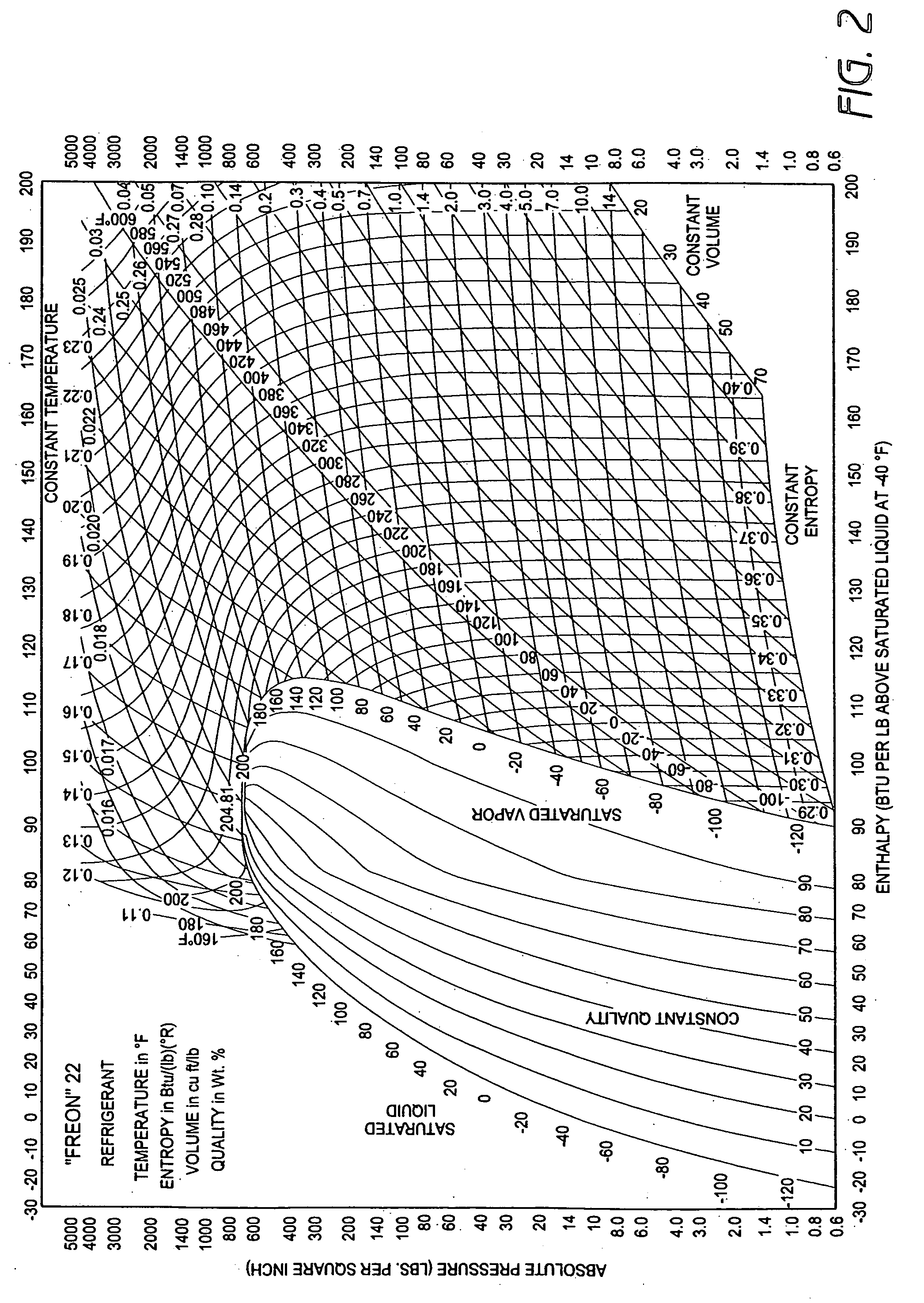Method and apparatus for airflow monitoring refrigerant-cycle systems
a technology of refrigerant cycle and monitoring method, which is applied in the direction of domestic cooling apparatus, instruments, heating types, etc., can solve the problems of reducing the overall efficiency of the system, increasing the cost of providing electricity, and increasing the cost of operating the system unnecessarily
- Summary
- Abstract
- Description
- Claims
- Application Information
AI Technical Summary
Benefits of technology
Problems solved by technology
Method used
Image
Examples
Embodiment Construction
[0037]FIG. 1 is a diagram of a typical refrigerant cycle system 100 used in HVAC systems, refrigerators, freezers, and the like. In the system 100, a compressor provides hot compressed refrigerant gas to a hot gas line 106. The hot gas line provides the hot gas to a condenser 107. The condenser 107 cools the gas and condenses the gas into a liquid that is provided to a liquid line 108. The liquid refrigerant in the liquid line 108 is provided through a metering device 109 to an evaporator 110. The refrigerant expands back into a gas in the evaporator 110 and is provided back to the compressor though a suction line 110. A suction service valve 20 provides access to the suction line 11. A liquid line service valve 121 provides access to the liquid line 121. A fan 123 provides input air 124 to the evaporator 110. The evaporator cools the air and provides cooled evaporator output air 125. An optional drier / accumulator 130 can be provided in the liquid line 108. A fan 122 provides coolin...
PUM
| Property | Measurement | Unit |
|---|---|---|
| temperature | aaaaa | aaaaa |
| temperature | aaaaa | aaaaa |
| condensing temperature | aaaaa | aaaaa |
Abstract
Description
Claims
Application Information
 Login to View More
Login to View More - R&D
- Intellectual Property
- Life Sciences
- Materials
- Tech Scout
- Unparalleled Data Quality
- Higher Quality Content
- 60% Fewer Hallucinations
Browse by: Latest US Patents, China's latest patents, Technical Efficacy Thesaurus, Application Domain, Technology Topic, Popular Technical Reports.
© 2025 PatSnap. All rights reserved.Legal|Privacy policy|Modern Slavery Act Transparency Statement|Sitemap|About US| Contact US: help@patsnap.com



